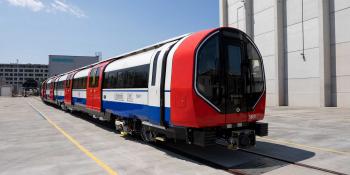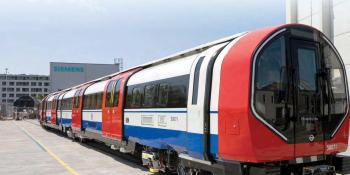
Testing has begun on the first Siemens Mobility-built 2024 stock train for London Underground’s Piccadilly Line at the Wildenrath test centre in Germany.
Transport for London has ordered 94 new trains for the Piccadilly Line to replace the current 86-strong 1973 stock fleet. While the first complete nine-car set undergoes testing at Wildenrath, three carriages from a second train are being tested in climate chamber at Siemens’ Vienna site, covering extreme cold and heat. The first train is due to be delivered to London by rail in summer 2024 for further testing, with service entry planned in 2025.
The 2024 stock trains are based on Siemens’ Inspiro family of metro trains, with benefits including walk-through air-conditioned carriages and improved accessibility. Each train will be able to carry 1,042 passengers, around 10% more than a 1973 stock train, and the larger fleet will enable TfL to increase the peak frequency on the Piccadilly Line from 24 to 27 trains per hour at a timetable change in May 2027, providing a further capacity increase.
Although assembly is initially taking place at Siemens’ factory in Vienna, from March 2024 Siemens plans to start assembly of the 2024 stock trains at its new manufacturing facility at Goole (although car bodies will still come from Vienna). While the original plan was to build around half of the 94 trains in Goole, Siemens is looking to increase this proportion.
TfL is calling for funding support from Government to enable it to invest in more new Siemens trains. There is an option for a further 18 trains for the Piccadilly Line if re-signalling proceeds, providing a further frequency and capacity increase. The overall Deep Tube Upgrade Programme (DTUP) contract also has options to roll out the same design of train on the Bakerloo, Central and Waterloo & City Lines, potentially taking the size of the total order to 312 trains. The top priority is replacing the Bakerloo Line’s 1972 stock fleet, which is already more than 50 years old.
A detailed feature on 2024 stock technical details, testing and introduction plans will appear in our January 2024 issue.





